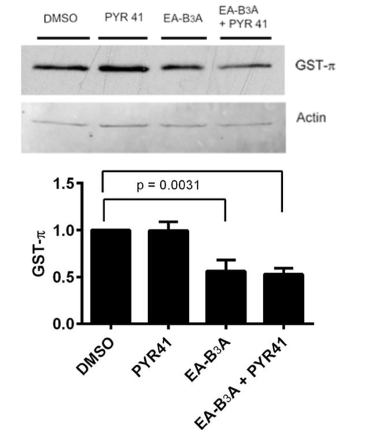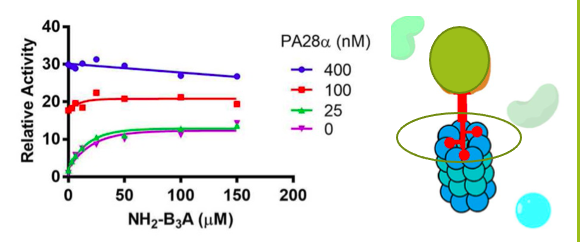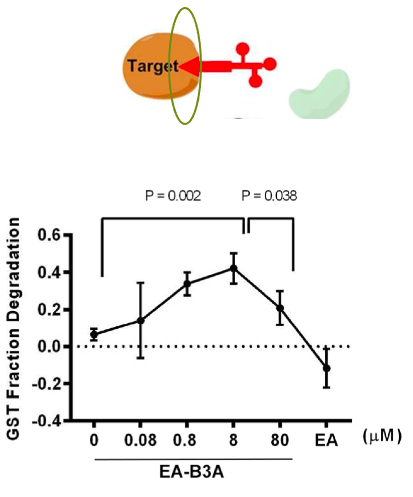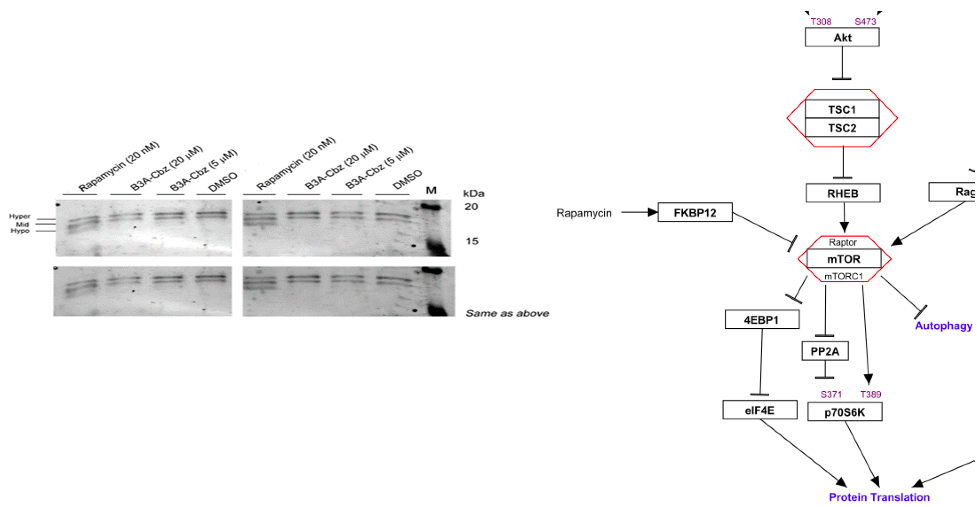Master’s Projects
Key Skills Acquired
Enzymatic activity assays for proteasome catalytic activity analysis.
Culturing and maintaining mammalian cell lines (HeLa, HEK293T, LAM).
In-cell assays and Western blots for protein degradation studies.
Plasmid transformation, propagation, and extraction in E. coli.
Transient transfection of mammalian cells with tagged proteins.
Project 1: First Ubiquitin-Free Strategy for Targeted Protein Degradation
My research experience during my master’s degree came from working in the Hedstrom lab. The lab previously discovered that a small molecule, tert-butyl carbamate (Boc3)-protected arginine (B3A), can degrade target proteins when linked to a recognition ligand of the target protein. I participated in the study to investigate the mechanism of this small molecule-mediated protein degradation. Together with my research mentor, this work has been published in ACS Chemical Biology.

Figure 1: Abstract of the published paper.
In this project, I help conducted experiments to show that B3A localizes target proteins to the 20S proteasome and activates the proteasome by binding directly to it. My specific experiments provided evidence that poly-ubiquitination is not required, and the dosage-dependent curve for the degradation, demonstrating that either excessive binding of the small molecule to the proteasome or too much B3A-ligand would block the interaction between the tagged protein and the proteasome. Our work demonstrated that B3A ligands are the first strategy to achieve targeted protein degradation without the ubiquitination process.

Figure 2: Degradation of endogenous GST-pi protein in Hela & Hek293T cells; PYR-41 is a poly-ubiquitination inhibitor

Figure 3: The interaction between B3A and the proteasome: High B3A concentration blocks proteasome activity; B3A binds at a different site than the PA28alpha proteasome activator.

Figure 4: The dose-dependent curve of GST degradation by the 20S proteasome.
Project 2: Mechanism of CBZ-B3A Mediated Inhibition of Protein Synthesis
I also participated in a project studying the mechanism of benzyloxycarbenyl-B3A (Cbz-B3A) mediated inhibition of mTORC1 signaling. Cbz-B3A inhibits the phosphorylation of eIF4E-binding protein 1 (4EBP1) and blocks 68% of translation.
My involvement included conducting cell experiments to show that Cbz-B3A acts on TSC or upstream of TSC to inhibit translation.
I used LAM cell culture, which lacks the TSC complex, to determine if TSC is involved in the mechanism of Cbz-B3A mediated mTORC1 signaling inhibition. I also used HEK293T cell culture as a control.

Figure 5: Cbz-B3A fails to bring 4EBP1 to a hyperphosphorylated state in cells lacking the TSC complex.
Undergraduate Research
Synthesis of Cadiolides and Cadiolide Analogs
During my undergraduate studies, I was accepted into the SURF (Summer Undergraduate Research Fellowship) program, where I researched a novel synthesis strategy for the antibiotic cadiolides. This work resulted in a SURF paper. The detailed paper can be found here, as well as in my honors thesis.

Figure 6: Cadiolides structure.

Figure 7: The planned synthesis steps.